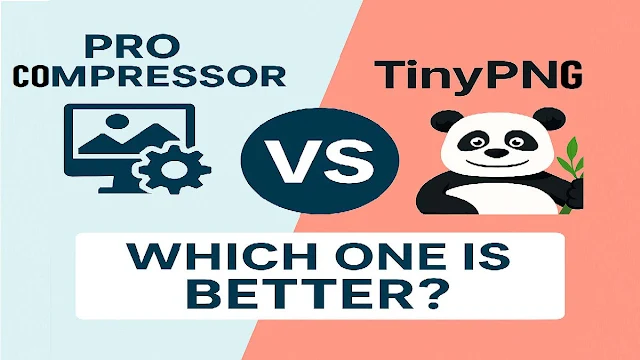When it comes to image optimization, two popular tools stand out: ProCompressor and TinyPNG. Both claim to reduce image sizes while preserving quality, but which one truly delivers the best results for SEO, speed, and user experience? This detailed comparison will help you decide.

1. Interface and Ease of Use
TinyPNG offers a clean and minimalist interface. Just drag and drop your images and download them. ProCompressor, on the other hand, provides a modern layout with preview options, a quality slider, and batch tools—perfect for both beginners and pros.
2. Supported Formats
- ProCompressor: JPG, PNG, WebP
- TinyPNG: JPG, PNG
Winner: ProCompressor, due to WebP support.
3. Compression Quality
Both tools offer excellent compression with minimal visual loss. However, ProCompressor lets users choose the compression level with a quality slider, offering more control. TinyPNG applies fixed compression without customization.
4. Batch Processing
ProCompressor: Allows bulk upload and ZIP download in one click.
TinyPNG: Allows 20 files max (5 MB per file), no ZIP download unless you use the plugin or pay.
5. Speed and Performance
Tests show that ProCompressor is slightly faster in uploading and downloading bulk images, especially on slower networks. Its ZIP download feature saves time for blog and site managers.
6. SEO and Web Optimization
Both tools help improve page speed and SEO, but ProCompressor includes extra features like WebP format, ALT text tips, and blog-use cases, which are perfect for bloggers and affiliate marketers.
7. Cost and Limitations
- TinyPNG: Free for limited use, paid plan required for more features
- ProCompressor: Fully free and ad-supported
Final Verdict: Which One Should You Choose?
If you're looking for a simple drag-and-drop tool for 1–2 images, TinyPNG does the job well. But if you’re managing a blog, affiliate site, or eCommerce store with high image volume, ProCompressor is the clear winner due to batch processing, WebP support, speed, and SEO features.



0 Comments